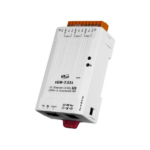 Gen IV Controller
Gen IV Controller
Modbus TCP Instructions
The AcraDyne controller supports the Modbus/TCP Server protocol on the local Ethernet port.
The controller can accept messages from a Modbus/TCP Client and return responses to the Client.
From the main menu, select Controller. 
Select IO.
Following are the Modbus TCP options
Supported Features:
The Modbus/TCP server supports the Modbus RTU protocol. Modbus RTU is a communication protocol that represents devices as “Registers” and “Coils.” Modbus TCP defines multiple classes of devices based on functionality. The controller is a Class 1 device supporting all Class 0 and 1 functions.
- Class 0 devices must support function codes 3 and 16
- Class 1 devices must support function codes 1–7 and 16.
The supported functions are:
- Function Code 1 – Read Coil Status
- Function Code 2 – Read Input Status
- Function Code 3 – Read Holding Registers
- Function Code 4 – Read Input Registers
- Function Code 5 – Force Single Coil
- Function Code 6 – Write Single Holding Register
- Function Code 7 – Read Exception Status
- Function Code 16 – Write Multiple Holding Registers
AcraDyne Gen IV Controller: Modbus TCP Instructions
Controller Outputs Addressing
The controller’s assignable outputs are mapped as Modbus TCP input registers. The first two assignable output bytes are registered 0 followed by register 1 (bytes 2 & 3). Since Modbus TCP uses 16-bit registers it is helpful to create assignments with a size of INT16. The controller’s outputs can be read with function code 4 “Read Input registers.”
The controller’s outputs can also be addressed as coils. The assigned outputs start at coil #16. The controllers outputs can be read with function code 2 “Read Input Status.”
Controller Inputs Addressing
The controller’s assignable inputs are mapped as Modbus TCP holding registers. The first two assignable input bytes are registered 1000 followed by register 1001 (bytes 2 & 3). Since Modbus TCP uses 16-bit registers it is helpful to create assignments with a size of INT16. The controller’s inputs can be written with function code 6 “Write Single Holding register” and function Code 16 “Write Multiple Holding registers.” The controller’s inputs can also be read with function Code 3 “Read Holding registers.”
The controller’s inputs can also be addressed as coils. The assigned inputs start at coil #1015.
The controller’s inputs can be written with function code 5 “Force Single Coil.” The controller’s inputs can also be read with function code 1 “Read Coil Status.”
Modbus TCP Inputs
These types of communication are useful for data communication between controllers and PLCs. It is an effective, quick way for the data transfer of short data packages.
Example of the Modbus TCP Input screen with five Inputs set up.
Click on ![]() to change an individual Element or return to the Input Configuration screen.
to change an individual Element or return to the Input Configuration screen.
![]() Will delete individual Elements.
Will delete individual Elements.
Element Type: Choose from Byte,
Int16, Int32, or ASCII.
Element: Shows element # being configured
Bit (not shown): Enter Bit #.
Bits: # of bits the assignment will read.
Start at: Starting bit location.
Polarity (not shown): Select Normally Open (N.O.) or Normally Closed Outputs (N.C.).
Length (not shown, available in ASCII ID function): Number of characters desired to send.
Torque (not shown, available in Click Wrench function): Torque value to be reported when using Click Wrench input. Value input is what will be sent from the controller when Input Signal is received from a Click Wrench. Value is NOT calculated by the controller rather it is solely what the Click Wrench is calibrated to by outside means.
Torque Units (not shown, available with Click Wrench function): Choose from Nm, Kgm, Kgcm, Ftlb, and Inlb.
Function: See the Gen IV Controller User Manual for more details. Select desired Input Function(s).
Click on![]() it after appropriate selections are made.
it after appropriate selections are made. 
Example of the Modbus TCP Output screen with five Outputs set up.
Click on it to change an individual Element or return to the Input Configuration screen.
it to change an individual Element or return to the Input Configuration screen.
![]() Will delete individual Elements.
Will delete individual Elements.
Element Type: Choose from
Byte, Int16, Int32, or ASCII.
Element: Shows element #
being configured
Bit: Enter Bit #.
Bits (not shown): # of bits the assignment will read.
Start at: Starting bit location.
Polarity: Select Normally Open or Normally Closed Outputs.
Mode:
- Normal: Output signal sent.
- Timed Signal Sent: Time entered in seconds
- Flash Signal Sent: Time entered in seconds
Function: See the Gen IV
Controller User Manual for more details on assignable functions.
Click on  after appropriate selections are made.
after appropriate selections are made.
 CORPORATE HEADQUARTERS10000 SE Pine Street
CORPORATE HEADQUARTERS10000 SE Pine Street
Portland, Oregon 97216
Phone: (503) 254–6600
Toll-Free: 1-800-852-1368
AIMCO CORPORATION DE MEXICO SA DE CV
Ave. Cristobal Colon 14529
Chihuahua, Chihuahua. 31125
Mexico
Phone: (01-614) 380-1010
Documents / Resources
 |
AcraDyne LIT-MAN177 Gen IV Controller Modbus TCP [pdf] Instructions LIT-MAN177 Gen IV Controller Modbus TCP, LIT-MAN177, Gen IV Controller Modbus TCP |



